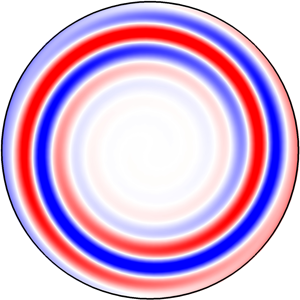Crossref Citations
This article has been cited by the following publications. This list is generated based on data provided by
Crossref.
Feldmann, Daniel
Morón, Daniel
and
Avila, Marc
2020.
Spatiotemporal Intermittency in Pulsatile Pipe Flow.
Entropy,
Vol. 23,
Issue. 1,
p.
46.
Harlander, U.
and
Kurgansky, M. V.
2021.
Two-dimensional internal gravity wave beam instability. Linear theory and subcritical instability.
Geophysical & Astrophysical Fluid Dynamics,
Vol. 115,
Issue. 5-6,
p.
612.
Kern, J.S.
Beneitez, M.
Hanifi, A.
and
Henningson, D.S.
2021.
Transient linear stability of pulsating Poiseuille flow using optimally time-dependent modes.
Journal of Fluid Mechanics,
Vol. 927,
Issue. ,
Pier, Benoît
and
Schmid, Peter J.
2021.
Optimal energy growth in pulsatile channel and pipe flows.
Journal of Fluid Mechanics,
Vol. 926,
Issue. ,
Lebbal, Smail
Alizard, Frédéric
and
Pier, Benoît
2022.
Linear instabilities of pulsatile plane channel flow between compliant walls.
Journal of Fluid Mechanics,
Vol. 948,
Issue. ,
Morón, Daniel
Feldmann, Daniel
and
Avila, Marc
2022.
Effect of waveform on turbulence transition in pulsatile pipe flow.
Journal of Fluid Mechanics,
Vol. 948,
Issue. ,
Gong, Minjiang
Xiong, Chengwang
Mao, Xuerui
Cheng, Liang
Wang, Shi-Ping
and
Zhang, A-Man
2022.
Non-modal growth of finite-amplitude disturbances in oscillatory boundary layer.
Journal of Fluid Mechanics,
Vol. 943,
Issue. ,
Jacob, Chinthaka
Tingay, David G.
and
Leontini, Justin S.
2023.
Mean streaming and the onset of turbulence in the reciprocating flow in a double bifurcation airway model: Insights for high-frequency ventilation.
Physical Review Fluids,
Vol. 8,
Issue. 12,
Chen, Yicheng
Feng, Xin
Shi, Xieqi
Cai, Weihua
Li, Biao
and
Zhao, Yijun
2023.
Evaluation of computational fluid dynamics models for predicting pediatric upper airway airflow characteristics.
Medical & Biological Engineering & Computing,
Vol. 61,
Issue. 1,
p.
259.
Foggi Rota, Giulio
Monti, Alessandro
Rosti, Marco E.
and
Quadrio, Maurizio
2023.
On–off pumping for drag reduction in a turbulent channel flow.
Journal of Fluid Mechanics,
Vol. 966,
Issue. ,
Linot, Alec J.
Schmid, Peter J.
and
Taira, Kunihiko
2024.
On the laminar solutions and stability of accelerating and decelerating channel flows.
Journal of Fluid Mechanics,
Vol. 999,
Issue. ,
Liu, Xu
Zhu, Hongbo
Bao, Yan
Srinil, Narakorn
Zhou, Dai
and
Han, Zhaolong
2024.
Time-delayed characteristics of turbulence in pulsatile pipe flow.
Journal of Fluid Mechanics,
Vol. 979,
Issue. ,
Morón, Daniel
and
Avila, Marc
2024.
Turbulent puffs in transitional pulsatile pipe flow at moderate pulsation amplitudes.
Physical Review Fluids,
Vol. 9,
Issue. 2,
Kern, J. Simon
Lupi, Valerio
and
Henningson, Dan S.
2024.
Floquet stability analysis of pulsatile flow in toroidal pipes.
Physical Review Fluids,
Vol. 9,
Issue. 4,
Joy Kolliyil, Jibin
Shirdade, Nikhil
and
Brindise, Melissa C.
2024.
Investigating intermittent behaviors in transitional flows using a novel time–frequency-based method.
Experiments in Fluids,
Vol. 65,
Issue. 8,
Andriano, G.
Passaggia, P. -Y.
Caillol, C.
Higelin, P.
Harambat, F.
and
Houille, S.
2024.
On the asymptotic analysis of pulsating planar Poiseuille flow instabilities.
Proceedings of the Royal Society A: Mathematical, Physical and Engineering Sciences,
Vol. 480,
Issue. 2300,
Gesla, A.
Duguet, Y.
Le Quéré, P.
and
Martin Witkowski, L.
2024.
On the origin of circular rolls in rotor-stator flow.
Journal of Fluid Mechanics,
Vol. 1000,
Issue. ,
Thomas, Christian
and
Pretty, Alexander
2025.
Impulse response of linear disturbances in a skewed Stokes layer.
Physics of Fluids,
Vol. 37,
Issue. 1,
Camobreco, Christopher J.
Pothérat, Alban
and
Sheard, Gregory J.
2025.
Pulsatility delays the transition to sustained turbulence in quasi-two-dimensional shear flows.
Physical Review Fluids,
Vol. 10,
Issue. 2,




